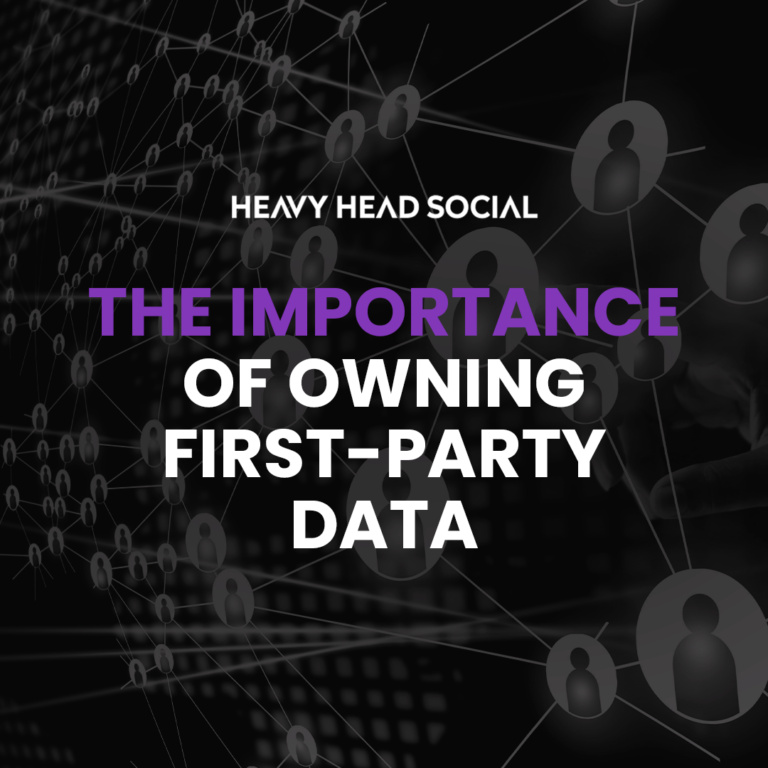Your average retail store and company have migrated online today, and as they have they have started to own first-party data. As more people use online in their day-to-day lives, the question of privacy and data use has grown. More recently, companies such as Apple (link to iOS blog) and Google have introduced privacy measures to combat inappropriate use of data.
This has affected marketers in how they reach their audience. Similarly, it has affected how online stores reach their customers and communicate with them. As a result, 2022 is all about collecting first-party data.
What is first-party data?
Online stores and interactions have grown rapidly in the last two years. Firstly, due to a global adoption of making purchases online and, secondly, due to the pandemic. As people went out less and started working remotely, they shifted from offline to online. This also caused many businesses to do the same.
The stats don’t lie:
- 2.14 billion people worldwide shop online
- 63% of all shopping now begins online
- 42% of people bought groceries online after the pandemic compared to 22%
It’s staggering how much shopping has moved online in such a short time and continues to grow exponentially year-on-year.
However, as more people began to interact in the online space, concerns about data handling and privacy also grew.
Now, marketers have been forced to adapt and personalise their interactions with customers. Another aspect of this is how they collect data from their audience. First-party data is information about customers and subscribers that a brand or marketer collects directly from that person.
Up until now, third-party data has been what digital marketers have relied on, but not anymore. Today, brands and businesses have been turning their attention to their current customers to collect more data about them. It’s not only an aspect of more privacy, but also personalisation. The trend has been towards focusing on customers and what information they are willing to share.
In turn, this theoretically improves the customer experience. And it improves how brands communicate with and understand their customers. Customer journeys are now more personal than ever and hold more value for people, when done right.

Benefits of First-Party Data
In the past, marketers used third-party data to connect with an audience. This data doesn’t know much about its consumer and is collected from outside sources. What makes third-party data a problem is that users receiving marketing based on it haven’t consented to it. What’s more, because it knows nothing about the person it’s speaking to it fails in terms of personalising the experience of that person.
Therefore, when it comes to first-party data there are a lot of benefits such as:
- The brand owns the data
- Follows privacy laws
- Better customer experience
- Data is accurate
- More affordable to collect than brand new data
How First-Party Data is Collected
First-party data is collected by simple opt-ins forms. For example, you land on a website and a pop-up appears that asks for your name and email. In return, you receive a discount on your first order.
In the same way, brands can have surveys or get even more interactive by asking their customers what dress they prefer for a night out. By answering, brands are then collecting data that can be used to inform their decisions on what to discount or what they should get more stock of. They could even discover a potential bestseller that they wouldn’t have promoted before.
First-party data is also collected in other ways linked to customer behaviour. While a customer is on your site, this data is collected based on their actions. As a result, this behavioural data can be used to direct a customer’s journey based on what they did and what they clicked on.
In conclusion, brands and marketers shouldn’t view first-party data as just meaning more effort on their part. The world is obsessed with personalisation. Mainly because people want to be seen as individuals as they move through the online world. The brands with the best grasp on their customers and what they love are the ones that will succeed.
Why? Because they are able to turn one-time customers into loyal customers and retain them much easier. This means one person making multiple purchases a month, which is what defines a truly successful brand.
The way that we do this is by implementing a combined marketing strategy that includes other methods of engagement. Once a person becomes a customer, they are engaged through email and SMS to continuously offer them value. This value translates into people making those multiple purchases and becoming loyal to a specific brand. Why? Because it isn’t only about sales. It’s about making them feel a part of something bigger. It’s about continuously offering value and putting in the work to create that brand loyalty.
We use the first-party data that we have gained to offer relevant content that is personalised and worth something. If it wasn’t for this type of data it would be difficult to understand customers on a personal level.
If this interests you and you’d like to find out how you can collect first-party data that gives you the edge then book a call.








